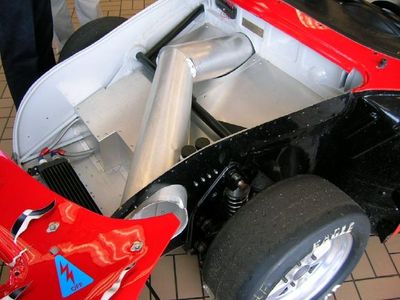I wouldn't be surprised if the rear wheel wells had positive air pressure at speed. I'd push the easy button and one put the inner section of that louver set in the sidewalls of the engine compartment through to the wheel wells facing "backwards". I'd not use the louvers at all and avoid all that bodywork. Baffling for rain intrusion would be pretty easy as discussed earlier.
Airflow, especially at the rear half of any car, is hard to predict. Measurements taken at 3" from the surfce won't tell you much because it's outside the boundary layer of airflow that the louvers live in (unless the boundary layer has separated that much from the body, oh-oh! Now it's turbulent flow, see below).
As much as we would like to have a laminar flow over the entire car, by the time the air gets to the rear fender arches its probably already a turbulent flow. Even if it were laminar the louvers would create local turbulent flow. That's important because it would reduce flow through the louvers. That's another consideration, what is the area of the openings in the louvers? You can't ignore that if you're gonna be concerned about how much air flows through the inlet on a turbo hat. Whatever that area is, the turbulent flow will reduce its effective area considerably. We'd need a wind tunnel and a room full of sliderules to figure it out exactly, or a super accurate solid model of a 356, a big computer, and someone good with fluid dynamics software.
To make matters more complicated we are trying to duct air into an area of lower pressure. The question is how much lower? We have the airpump of the engine and the air pump that is the fan removing air from the engine compartment and moving it into the air flow at the rear of the car via sled tins and exhaust, so we can reasonably assume that the air pressure in the engine compartment is lower than outside of it when the car is at a standstill, and it will remain so until the speed is high enough to create a larger low pressure zone at the rear of the car. At what speed does that happen? I don't know, but I'll bet it's fast enough to get your attention. I don't think Porsche could afford a wind tunnel in the 50's, but they did have hole saws, sheet metal shears, and inmagination. They did the best they could.
The question of these louvers is, to me, mainly one of aesthetics. You like the look or you don't. I don't, but it ain't my car and for all I know they might help.







